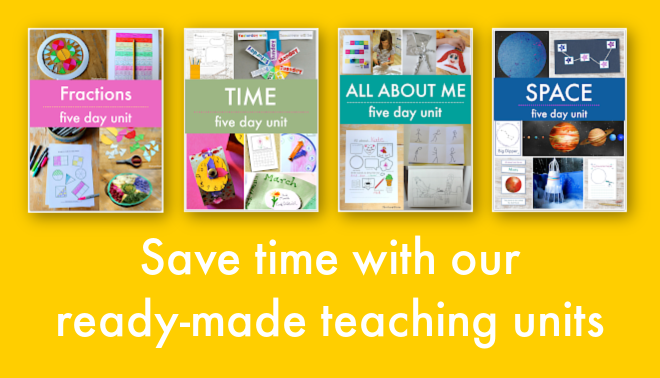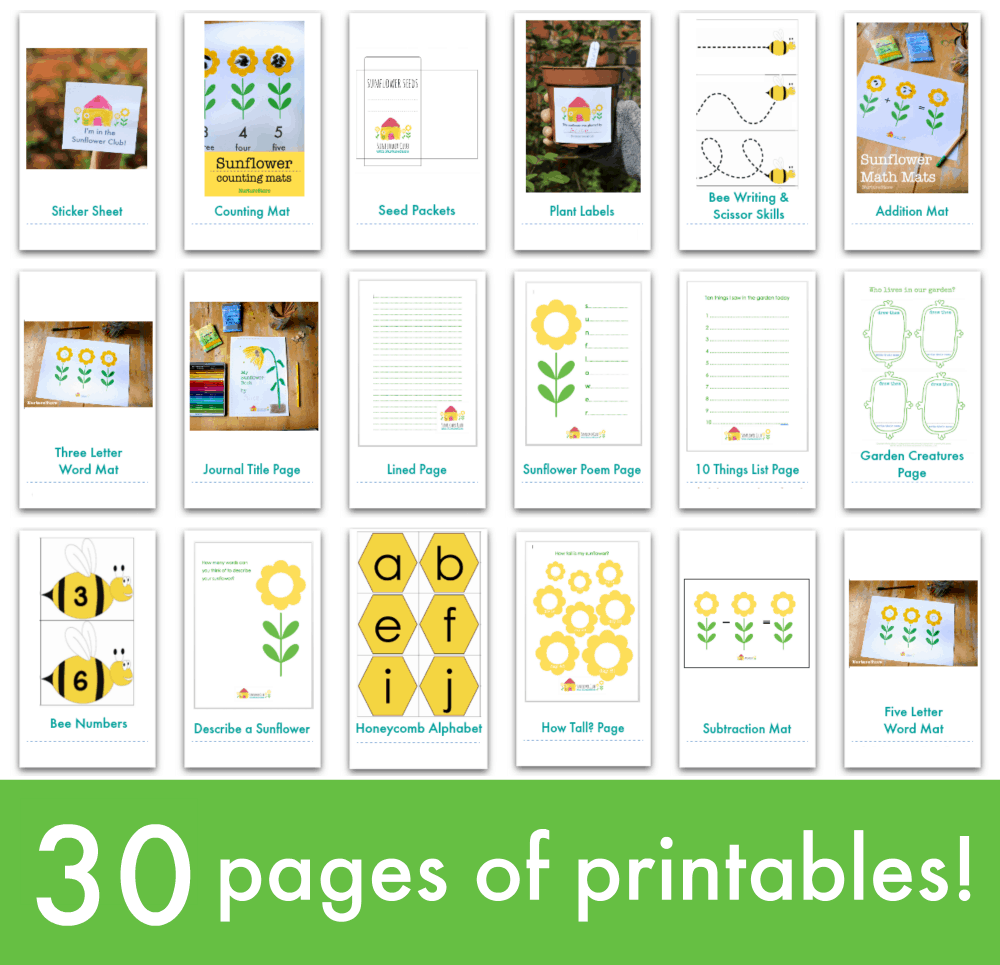We’re learning about bees this month as part of our Sunflower Club. In this lesson you will learn why bees are so amazing, what bees look like, how bees make honey, and lots more.
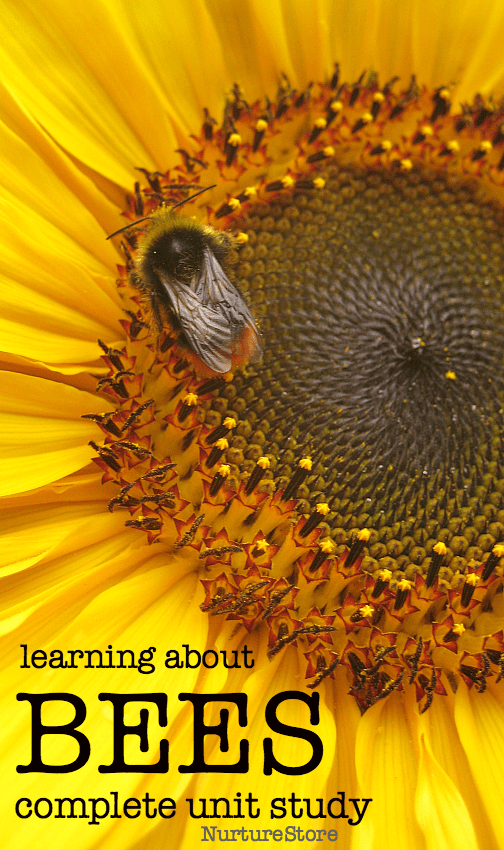
Bees are amazing and important!
This lesson is a sample from the Bees and Pollination Unit in the Sunflower School curriculum.
Click here to download the complete Sunflower School curriculum.
Let’s learn about bees
Bees are insects and are closely related to ants and wasps. They are one of the most important animals on our planet because of the part they play in helping plants grow. Without bees and the way they pollinate plants we wouldn’t have many of our favourite foods.
Bees live on every continent in the world except Antartica. Anywhere we find insect-pollinated flowers, you’ll find bees.
Bees fly from plant to plant gathering nectar, which gives them energy, and pollen which provides them with protein.
What do you know about bees?
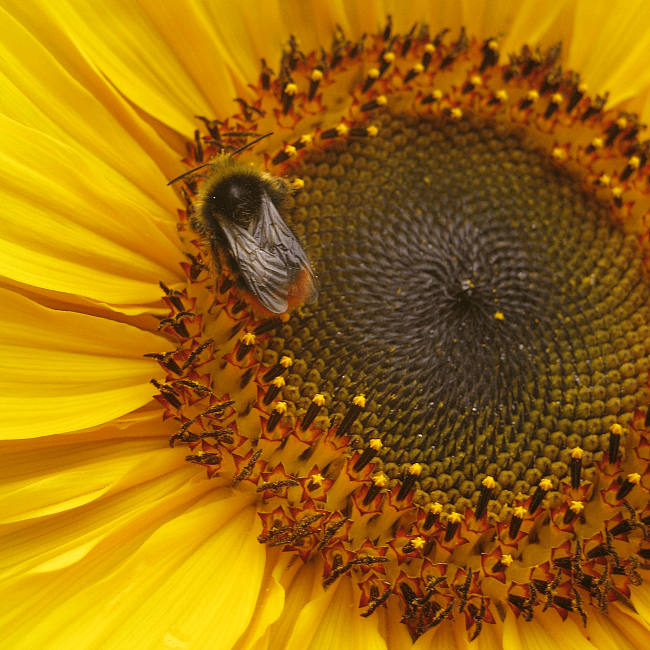
What kinds of bee are there?
Some bees are solitary, which means they live on their own. Other bees live together in colonies with a queen bee.
There are almost 20,000 different species of bee, including the stingless bee, mason bee, leaf cutter bee, honey bee, and the bumble bee, which has a round body that is covered in fuzzy, soft hair.
You can use this bee spotting guide to identify which bees visit your garden. Or print off these bee spotting sheets here and here.
What’s your favourite kind of bee?
What do bees look like?
Bees have two large compound eyes, with three small eyes in between.
They have antennae which they use to smell and taste.
They have mouth parts called mandibles, which they use for chewing – a bit like a knife and fork. And they have a proboscis which they use for sucking – like a straw.
They have a head, and a thorax which is split into three segments, each with a pair of legs.
They have two pairs of wings.
And they have an abdomen which is split into nine segments. The last three segments for their sting.
Can you draw a picture of a bee in your Sunflower Journal, and labels all the body parts?
Watch this video from All Things Animal TV to learn some more about bees.
Do bees sting?
Not all bees sting, and those that do only sting to defend themselves from attack. For most people a bee sting is a painful but harmless feeling that fades quickly. When you see a bee you can watch it calmly and treat it with respect and it will not try to sting you – it just wants to fly passed on its way to gather food.
Have you ever been stung by a bee? What did it feel like?
The Waggle Dance!
Did you know that honey bees ‘talk’ to each other by doing a waggle dance? They pass messages about where the other bees can find food. We think that bees use the sun, the blue sky, and the earth’s magnetic field like a map to navigate around.
Listen to this piece of music by Nikolai Rimsky-Korsakov called The Flight of the Bumble Bee and do your own waggle dance!

How do bees make honey?
Not all bees make honey. The European Honey Bee (Apis mellifera) is the most common bee that does.
Honey bees live in big colonies. There might be tens of thousands of bees in one colony!
They have one queen bee, many female worker bees, and some male drone bees.
Inside the colony, the hive, the bees make honey combs. These are hexagon-shaped cells made of wax. This is where the baby bees grow, and where the honey is stored.
Some honey comb cells are where baby bees grow…
The life cycle of a bees in in four stages: egg, larva, pupa, and adult.
The queen bee lays an egg into each cell in the comb.
The egg hatches into a larva, and is fed by nurse bees.
After a week the larva is sealed in its cell by the nurse bees. The larva goes into its pupal stage. A big change is about to happen!
After another week the adult bee emerges.
And honey comb cells are also where honey is stored…
Honey bees collect nectar from flowers and convert it into honey.
The honey is a natural sugar that contains vitamins and minerals and has anti-bacterial and anti-fungal properties. It tastes good and gives energy. It’s also believed to be good for treating coughs, soothing skins complains, healing wounds, and reducing allergy symptoms.
The honey is food for the bees and helps to keep the hive warm over the winter.
Have you tried honey? What did it taste like? You might like to get some different types of honey, made by bees that gather their nectar from different types of plants, to see how they all taste different.
Watch this video to see how honey is made.
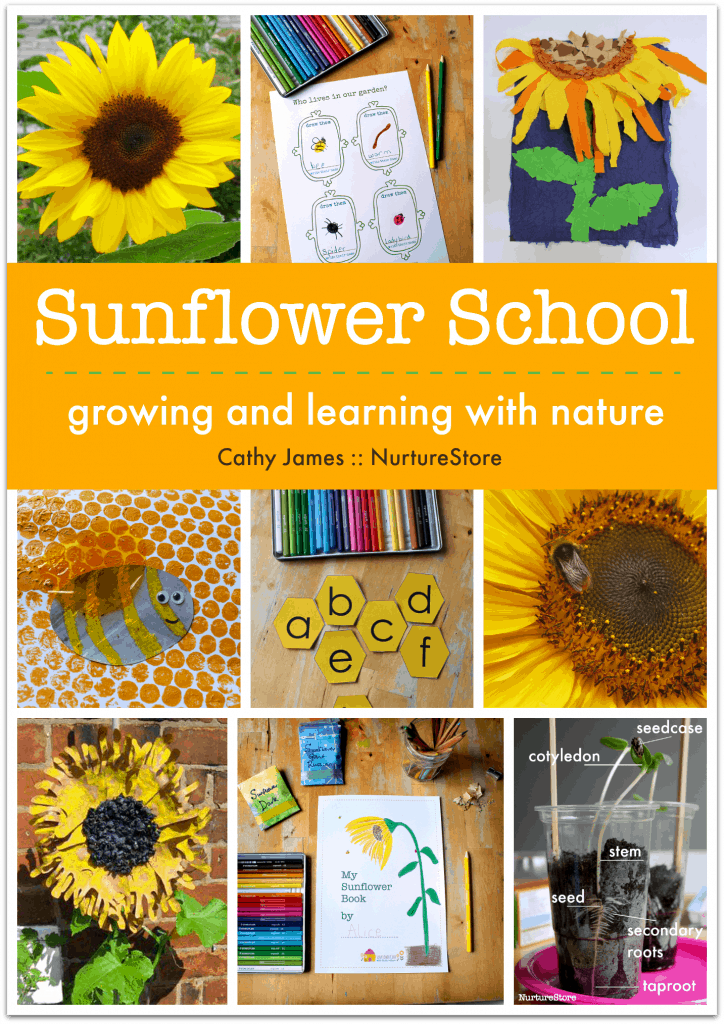
Sunflower School curriculum and printables
Click here to download your copy of the Sunflower School curriculum.
The Sunflower School curriculum matches a full programme of learning to the natural growing cycle of sunflowers.
It gives you six units of learning:
:: In the spring we’ll focus on planting and watching our plants grow.
:: In the summer we’ll learn about bees and pollination, and celebrate the gorgeous blooms through art.
:: In the late summer and early autumn we’ll turn our attention to harvesting, sustainability, and closing of the growing year.
Bonus sunflower printables
Our Sunflower School curriculum comes with 30 pages of bonus printables that you can use with your children to enrich their learning, including:
- My Sunflower Journal printable
- Lined, plain, and half-and-half journal pages
- Sunflower poems printable
- Sunflower sticker sheet
- Printable plant labels
- Sunflower counting mat
- Sunflower addition mat
- Sunflower subtraction mat
- Sunflower word mats
- Bee number cards
- Bee writing and scissor skills pages
- Garden Creatures page
- Honeycomb alphabet
- Printable seed packets
Click here to download the complete set of Sunflower School resources.



